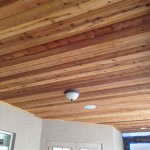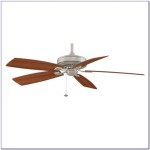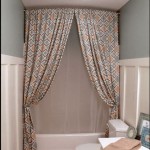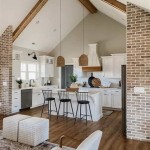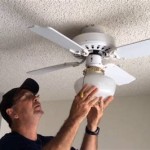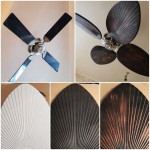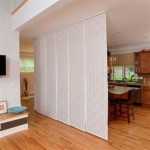How Much Does It Cost to Install a Beadboard Ceiling?
Installing a beadboard ceiling can significantly enhance the aesthetic appeal of a room, adding texture, character, and a touch of classic charm. Beadboard, with its distinctive vertical grooves, offers a more visually interesting alternative to plain drywall. However, before embarking on this home improvement project, it is crucial to understand the various factors that influence the overall installation cost. This article provides a comprehensive overview of these factors, enabling homeowners to budget effectively and make informed decisions.
The cost of installing a beadboard ceiling varies considerably, largely dependent on the size of the room, the type of beadboard material chosen, the complexity of the installation, and whether the project is tackled as a DIY endeavor or entrusted to professional contractors. Understanding these elements helps to create a realistic project budget and avoid unexpected financial burdens.
Generally, homeowners can expect to pay anywhere from $3 to $10 per square foot for beadboard ceiling installation. This broad range encompasses the cost of materials, labor (if applicable), and any necessary preparatory work. Projects involving intricate designs, challenging layouts, or the need for extensive surface preparation typically fall on the higher end of the spectrum.
Material Costs: Beadboard Type and Quantity
The type of beadboard selected is a primary cost driver. Beadboard is available in various materials, each with distinct price points and characteristics. The most common options include:
Wood Beadboard: Solid wood beadboard, usually made from pine or cedar, offers a classic, authentic look and can be stained or painted to match any decor. It is, however, generally the most expensive option, with prices ranging from $5 to $8 per square foot for the material alone. The cost will further increase based on the wood species, grade, and finish.
Medium-Density Fiberboard (MDF) Beadboard: MDF beadboard is a manufactured wood product that consists of wood fibers bonded together with resin under high pressure. It provides a smooth, consistent surface that is easy to paint and is less prone to warping or cracking than solid wood. MDF beadboard is a more affordable option than solid wood, typically costing between $2 and $5 per square foot.
Vinyl Beadboard: Vinyl beadboard is a waterproof and low-maintenance option ideal for bathrooms, kitchens, and other areas prone to moisture. It is resistant to rot, mold, and mildew, making it a durable and long-lasting choice. Vinyl beadboard is generally priced between $3 and $6 per square foot.
PVC Beadboard: Similar to vinyl, PVC beadboard is also waterproof and suitable for high-moisture environments. It is lightweight, easy to install, and available in various colors and finishes. PVC beadboard typically costs between $4 and $7 per square foot.
Beyond the type of material, the quantity of beadboard needed for the project significantly affects the overall cost. This is determined by the square footage of the ceiling being covered. It is prudent to calculate the area accurately and add a small percentage (around 10%) for waste due to cuts and miscalculations.
Labor Costs: DIY vs. Professional Installation
Labor costs constitute a substantial portion of the total project expense, particularly if the installation is outsourced to professional contractors. The decision to tackle the project as a DIY endeavor or hire professionals hinges on the homeowner's skill level, available time, and budget considerations.
DIY Installation: Homeowners with carpentry skills and a willingness to invest time and effort can save significantly on labor costs by installing the beadboard ceiling themselves. The DIY approach involves purchasing the materials and tools required, preparing the ceiling surface, cutting and installing the beadboard, and finishing the installation with trim and caulking. The only costs incurred are for materials and tools, which can range from a few hundred to several hundred dollars depending on the size of the project and existing tool inventory. Accurate measuring, precise cuts, and careful installation are crucial for a successful DIY project. Improper installation can lead to visible gaps, uneven surfaces, and potential future problems.
Professional Installation: Hiring professional contractors ensures a high-quality installation and saves homeowners time and effort. Contractors possess the experience, tools, and expertise to handle complex installations, ensuring a seamless and aesthetically pleasing result. Professional labor costs typically range from $2 to $5 per square foot, depending on the contractor's rates, the complexity of the project, and the geographic location. Obtaining multiple quotes from different contractors is recommended to compare pricing and service offerings. It is also advisable to verify the contractor's credentials, insurance coverage, and references before making a hiring decision.
Factors that influence labor costs include:
- Complexity of the ceiling: Ceilings with unusual shapes, angles, or obstructions (such as pipes or light fixtures) require more intricate cutting and installation, increasing labor costs.
- Accessibility: Ceilings that are difficult to access, such as those in high-ceilinged rooms or spaces with limited headroom, may require specialized equipment or additional labor, impacting the overall cost.
- Surface preparation: If the existing ceiling surface is damaged, uneven, or requires patching or leveling, this will add to the labor costs.
- Trim and finishing: The complexity of the trim work, including the installation of crown molding or baseboards, can also affect labor costs.
Additional Cost Considerations
Beyond material and labor costs, several other factors can influence the overall cost of installing a beadboard ceiling.
Surface Preparation: Before installing beadboard, the existing ceiling surface must be properly prepared. This may involve removing old paint or wallpaper, patching holes or cracks, and ensuring a clean, level surface. Depending on the condition of the existing ceiling, surface preparation can add significantly to the project cost.
Priming and Painting: Beadboard typically requires priming and painting to achieve the desired finish. The cost of primer and paint depends on the quality and type selected. Using high-quality paint can enhance the durability and longevity of the beadboard ceiling. The cost of primer and paint can range from $50 to $200, depending on the size of the ceiling and the number of coats required.
Tools and Equipment: If undertaking a DIY installation, homeowners may need to purchase or rent tools and equipment, such as a circular saw, miter saw, nail gun, level, and measuring tape. The cost of these tools can range from a few hundred to several hundred dollars, depending on the quality and type selected. Consider renting tools if they are not frequently used for other home improvement projects.
Electrical Work: Installing or relocating lighting fixtures, such as recessed lights or chandeliers, requires electrical work. Hiring a qualified electrician to handle electrical tasks is essential to ensure safety and compliance with building codes. Electrical work can add several hundred dollars to the overall project cost.
Permits: Depending on local building codes and regulations, a building permit may be required for installing a beadboard ceiling. Obtaining a permit can add to the project cost, but it ensures that the installation complies with safety standards and regulations. Check with the local building department to determine if a permit is necessary.
Waste Disposal: Disposing of construction debris, such as old ceiling materials and leftover beadboard, may incur additional costs. Some contractors include waste disposal in their service fees, while others may charge separately. Homeowners can also dispose of waste themselves at a local landfill or recycling center, but this may involve additional transportation fees.
Unexpected Costs: It is prudent to factor in a contingency fund to cover unexpected costs that may arise during the installation process. These costs may include unforeseen repairs, material shortages, or changes to the original design. A contingency fund of 10% to 15% of the overall project budget is recommended.
In summary, the cost of installing a beadboard ceiling is influenced by numerous factors, including the type of beadboard material, the size of the room, the complexity of the installation, labor costs, and additional expenses such as surface preparation, priming, painting, and electrical work. By carefully considering these factors and obtaining accurate quotes from contractors or researching DIY materials, homeowners can develop a realistic budget and successfully enhance their homes with a beautiful and functional beadboard ceiling.

How To Install A Beadboard Ceiling Pine And Prospect Home

How Much Does It Cost To Install A Beadboard Ceiling 2024 Data Angi

How To Install A Beadboard Ceiling Pine And Prospect Home

Diy Beadboard Ceiling Tutorial Easy And Inexpensive Custom Treatment

How To Install Beadboard Panels On A Ceiling And Why We Ll Never Do It Again The Lake Land

How To Install A Beadboard Paneled Ceiling The Kim Six Fix

How To Install A Wood Plank Ceiling Young House Love

Diy Beadboard Ceiling Tutorial Easy And Inexpensive Custom Treatment

Beadboard Ceiling What It Is And How To Install Yourself

How To Install A Beadboard Ceiling Pine And Prospect Home
Related Posts

